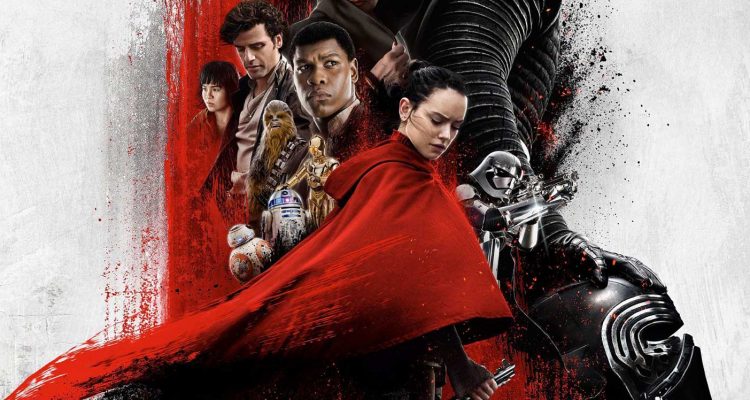So far in the “Star Wars” saga, the galaxy as we know it has been defined largely in binary terms; the light and darkness, the Jedi and The Dark Side. Between it all is The Force, the powerful, binding agent that exists between all things, an intangible element that can be harnessed for good or evil. As “Star Wars” has been regenerated for a new generation, The Force has achieved near mythological status. In “Star Wars: The Force Awakens,” former doubter Han Solo assures Rey that, “a magical power holding together good and evil, the dark side and the light….it’s true. The Force. The Jedi… All of it….” In “Rogue One: A Star Wars Story,” Donnie Yen’s Chirrut Îmwe is a faithful believer, with the the phrase “I’m one with the Force, and the Force is with me” acting as a devotional prayer of protection. However, if J.J. Abrams’ film served to nudge open the narrative possibilities of the franchise, Rian Johnson’s “Star Wars: The Last Jedi” daringly deconstructs the familiar ideals at its foundation. In his film, The Force can be a curse, and potential of its power is only equalled by the burden it puts on those who possess it.
The story, the precise details of which won’t be spoiled here, sees the Resistance reconfiguring their strategy as the First Order continues to hunt them down. Meanwhile, Rey (Daisy Ridley), picks up where we last left her, on Luke Skywalker’s (Mark Hamill) remote island, urging him to come out of exile. Those are the broad strokes, and narratively, ‘The Last Jedi’ splits between a few straightforward, lean plotlines. However, the clean strokes of the unspooling adventure allow Johnson, who also wrote the screenplay, plenty of opportunity to thoughtfully play in between the spaces with the characters. It’s in this place — yes, between the darkness and light — where the riches of ‘The Last Jedi’ emerge. What follows is an often perilous parable about the folly of blind conviction when severed from true understanding, and the necessary cost and lessons to be learned from failure and sacrifice.
Each of our lead characters — Rey, Finn (John Boyega), and Poe (Oscar Isaac) — are tested, their eagerness to become heroes rattled by a growing awareness of the complex realities and repercussions of their actions. Emotional and spiritual conflict is seeded in their hearts to varying degrees, and even Kylo Ren (Adam Driver) longs for understanding of his own volatile nature. ‘The Last Jedi’ is very much about how the leading ensemble addresses the absences — of family, faith, purpose — that dwell inside. It’s perhaps one of the most intense and arguably bleak “Star Wars” pictures yet, but naturally, it strives to find balance as well.
In the pursuit of providing some buoyancy to the picture, Johnson wields comedy like a sword, but it’s unfortunately the weakest element of the film. “Star Wars” has always been home to plenty of cornball one liners, and comedic passages, but there’s a delicacy to how they’re employed and delivered that allows them to land….or simply fall flat. Far too often, it’s the latter outcome in this picture, with some of the laughs feeling underwritten or simply shoehorned in. There’s a distinct lack of cleverness to the wit employed here — think something as seemingly spontaneous as BB-8’s “thumbs up” in ‘The Force Awakens’ — and while the gags don’t grind the picture to a halt, there are certainly some awkward patches where the expected laughs don’t materialize.
That necessary casual touch is better handled when it comes to introducing new creatures (yes, including the porgs and crystal foxes, which feel organically integrated, and are thankfully used with discretion) and even the new characters. Laura Dern’s steely Vice Admiral Amilyn Holdo brings a necessary, new dynamic to the storyline she becomes involved with. As for Benicio del Toro’s riotously weird DJ, his role in the film also becomes illustrative to the broader picture.
Working on his biggest canvas yet, Johnson — who has never been short on ambition — makes the most of the huge sandbox he gets to play in. The Monte Carlo-esque Canto Bight sees the director playfully reference the silent classic “Wings” as he introduces the audience to this playground for the galaxy’s wealthy citizens, while building a new setting that will be worth returning to and exploring in further detail in subsequent instalments. Visually, it’s not hyperbole to say that ‘The Last Jedi’ serves up a strong handful of iconic images that will be defining moments in the franchise. The same applies to some of the action sequences, which are aided by Johnson’s fingerprints as he finds dazzling new ways to stage battles after seven movies in the saga. Working with his longtime cinematographer Steve Yedlin, Johnson expands the visual language of the franchise, sometimes with breathtaking results. As for the score, it’s needless to say that John Williams’ work is strong; it’s part of the fabric of the series, but even having done this a while now, there are new motifs and angles with which he deepens the historic sonic palette.
“Star Wars” has always been about destiny, fate, and legacy. However, perhaps like no film in the franchise yet, ‘The Last Jedi’ seriously considers the hubris that comes with certainty, and how knots from the past that can keep you bound from moving forward. The Force has been awakened, but with that discovery comes restlessness, fear and awe; it’s the frailties of being human that even that universal power can’t solve. [B+]

